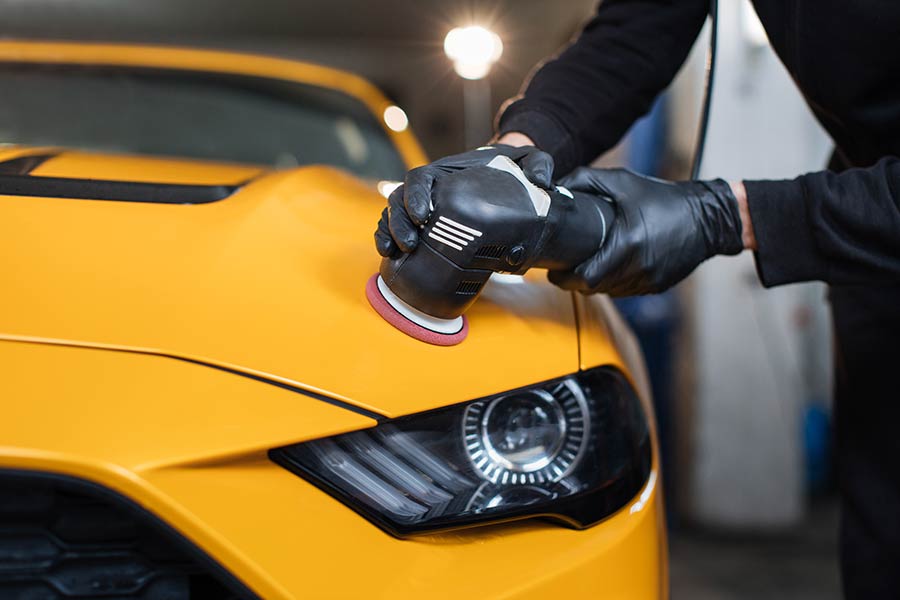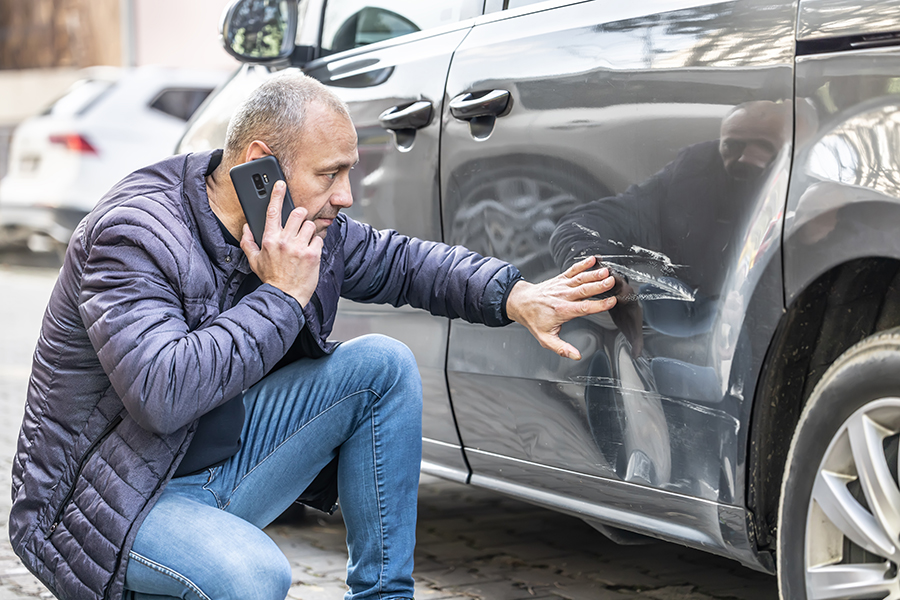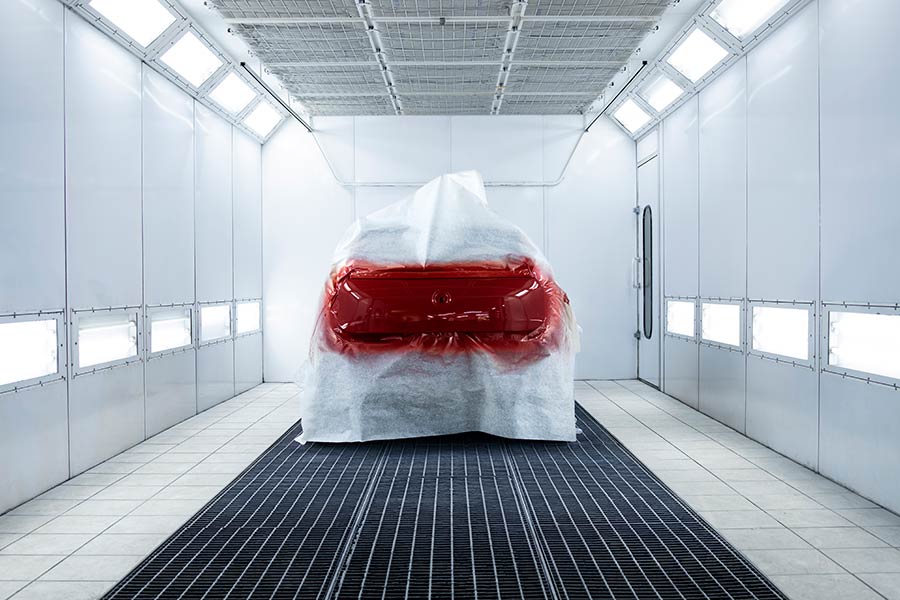In the hustle of today's world, car accidents happen more often than we'd like. The aftermath? A scramble for fast collision repair that doesn't just patch things up but restores your ride to its former glory. Gone are the days when fixing your car meant leaving it at the shop for weeks. Now, with advanced technology and skilled technicians, getting your vehicle back in shape is quicker and more efficient than ever before. Dive into how this speedy service can save you time and hassle, ensuring you're not left stranded for long.
Key Takeaways
-
Quick repair of your vehicle after a collision is crucial to ensure your safety and maintain the car's value. Prioritize shops that offer fast turnaround times.
-
Selecting a reputable repair shop is key. Look for certifications and positive reviews to ensure quality service.
-
Understanding your insurance policy can smooth out the claims process. Know your coverage details to expedite repairs.
-
Clear communication with the repair shop and insurance company can prevent delays. Don't hesitate to ask questions and seek updates.
-
Stay informed about the latest repair technologies. Shops that invest in modern equipment may offer faster and more cost-effective services.
-
The repair process involves several steps, from assessment to final touches. Knowing what to expect can help you plan accordingly and reduce stress.
Importance of Fast Repair
Minimizing Downtime
Fast-track repair services make a big difference for minor damages. They get cars back on the road quickly. Shops that use appointment scheduling see shorter waiting times. This makes customers happy.
Mobile repair services offer fixes on the go. They help people who can't easily visit a shop. This reduces stress and saves time.
Ensuring Safety
Safety comes first in fast collision repair. Shops must do thorough inspections to find all safety issues. This keeps drivers safe on the road.
Using OEM parts ensures repairs last and work well. It's like getting a piece of the original car back. Technicians trained in the latest safety protocols bring peace of mind. Customers know their cars are in good hands.
Routine Restoration
Offering maintenance helps prevent future collisions. It's a way to care for cars before problems happen. Detailing services make cars look new again. It's not just about looks; it's about pride in one's vehicle.
A checklist for routine restoration quality assurance is key. It guarantees every car gets the same high level of care. This builds trust with customers over time.
Choosing the Right Shop
Trust and Reputation
Customer testimonials can shine a light on a shop's quality. Happy clients often share their experiences. Look for these stories online and in the shop. Certifications and awards should be visible too. They show a shop's skill and dedication.
Shops that care about safety host workshops and events. These engage the community and build trust.
Service Range
Advanced Diagnostics
The best shops use top-notch diagnostic equipment. This makes sure they know exactly what to fix. Their staff also stays up-to-date with the latest software. Some even offer diagnostics before you decide to repair there.
Paintless Dent Repair
This method is quicker and cheaper than old-school repairs. Shops should have photos showing how well it works. The faster service means your car is back sooner.
Location Convenience
A good shop makes it easy to find them with a map on their website. They might offer a ride home or a loaner car while yours is being fixed. Some team up with local businesses to give you discounts during your wait.
Navigating Insurance Claims
Understanding Coverage
Navigating the insurance claims process can be tricky. That's why we guide our customers every step of the way. We highlight our partnerships with various insurance companies to ensure a smoother claim process. This helps reduce stress and confusion.
Our website features a FAQ section on insurance coverage. It answers common questions and makes the process clearer for everyone involved.
Communicating with Providers
We've set up direct lines of communication with insurance providers. This ensures that both you and your insurer stay informed throughout the repair process. We offer regular updates via email or SMS, so you're never in the dark.
Our staff receives training on insurance jargon. This helps them communicate more clearly and effectively with insurance providers.
Online Estimates
Our website offers an easy-to-use online estimate tool. This allows you to get a preliminary idea of repair costs from the comfort of your home. We also offer virtual consultations for initial damage assessments, making it convenient to start your repair journey.
To guarantee the accuracy of our online estimates, we follow up with in-person assessments. This ensures no detail is overlooked.
Effective Communication Tips
Repair Journey Transparency
Implementing a tracking system allows customers to monitor their car's repair progress. This makes the process clear and straightforward. Customers appreciate knowing what's happening with their vehicles.
Providing detailed explanations of each repair stage helps too. It ensures customers understand the work being done on their cars. A dedicated customer service line for repair inquiries offers a personal touch. It shows that the repair shop cares about customer concerns.
Setting Expectations
It's crucial to communicate potential repair timelines right from the start. This sets realistic expectations and helps avoid frustration later on.
Discussing possible complications upfront is equally important. It prepares customers for any unexpected issues. Providing a written agreement outlining service expectations offers clarity. It ensures both parties understand the terms of service.
Follow-up Practices
Conducting post-repair satisfaction surveys gathers valuable feedback. It shows customers that their opinions matter. Offering a warranty on repairs and following up before it expires demonstrates commitment to quality.
Sending reminders for recommended post-repair maintenance keeps cars running smoothly. It also reinforces the relationship between the repair shop and its customers.
Advancements in Repair Technology
Paintless Dent Techniques
The tools for paintless dent removal are unique. They include rods and picks tailored to massage dents out from behind the panel. This technique does not harm the paint, preserving the vehicle's value. Shops often offer demonstrations on this process. It shows customers the care taken to maintain their car's appearance.
Paintless dent repair keeps a car looking new. It avoids the need for repainting or filler use. Many shops now provide workshops on this method. This helps car owners understand the value of such repairs.
Advanced Diagnostic Tools
Repair shops have started using the latest diagnostic tools. These tools can quickly identify issues with precision. Advanced diagnostics lead to more accurate repairs, saving time and money.
Customers receive diagnostic reports. This adds transparency to the repair process. It shows them exactly what needs fixing and why.
Streamlining Processes
Efficient job tracking is now possible through software solutions. This software helps manage repair jobs from start to finish. Staff training in lean management techniques also contributes to faster turnaround times.
Mobile apps allow for quicker communication with customers. They can get updates on their repair status anytime, anywhere. This integration of technology speeds up the entire process.
The Repair Process Unveiled
Initial Assessment
During the initial assessment, technicians follow a checklist that includes examining the exterior and interior damage, checking the vehicle's mechanical systems, and scanning for any electronic issues. This comprehensive approach ensures an accurate quote for repairs. With advancements in repair technology, immediate on-site assessments are now possible using portable diagnostic tools. This not only speeds up the process but also ensures precision from the start.
Repair Work Begins
Once the initial assessment is complete, the repair work kicks off with disassembly to assess hidden damage. Next, structural repairs are made, followed by bodywork and paint. Throughout this process, OEM parts and certified technicians are utilized to guarantee quality. For minor repairs, customers can expect their vehicles back in a few days, while more extensive damage might take weeks.
Quality Checks
After repairs are done, vehicles undergo a multi-point inspection to ensure everything meets strict standards. The criteria include alignment checks, paint finish inspection, and ensuring all electronics function properly. Customers receive a quality guarantee that covers any issues related to the repair work performed.
Vehicle Return Prep
Before returning a vehicle, it undergoes thorough cleaning and detailing. A final inspection guarantees that the vehicle not only looks good but is in top condition mechanically and electronically. Upon pickup, customers are offered a walkthrough of the repaired areas to ensure satisfaction.
Getting Back on the Road
Post-Repair Care
After your vehicle leaves the repair shop, it's crucial to take care of it properly. Regular washing and waxing can protect the new paint job. It's also wise to keep it covered or in a garage to avoid damage from the elements.
For follow-up checks, mark your calendar for a visit back to the shop after 30 days. This allows any issues that might arise post-repair to be addressed promptly.
If you notice strange noises or if the car feels different while driving, don't wait. These could be signs that something isn't right. Bring it back to the professionals immediately.
Maintenance Tips
To prevent future wear and tear, adhere to seasonal maintenance routines. For instance, change your oil before winter and check your air conditioning before summer.
A simple checklist for regular maintenance should include tire pressure checks, oil changes, and brake inspections.
Remember, professional inspections are key. They ensure your vehicle is not only running smoothly but safely too. Mechanics can spot problems you might miss.
Safety Checks
During and after repairs, safety checks are paramount. These inspections ensure everything from brakes to seatbelts functions correctly.
The nature of safety checks can vary depending on the repair done. A fender bender might require a basic overview, while a major collision could necessitate a comprehensive examination.
Vehicles passing these rigorous inspections often receive safety check certifications. This certificate is proof that your vehicle meets all necessary safety standards.
Future of Collision Repair
Developing Professionals
Ongoing training and certification programs are essential. They ensure technicians stay ahead in the fast-evolving collision repair industry. Many shops now partner with technical schools, offering apprenticeship programs. This approach helps in grooming the next generation of skilled workers.
Employee success stories highlight the career progression available within the industry. These narratives inspire new entrants and emphasize the value of continuous learning.
Industry Innovations
The collision repair sector is embracing cutting-edge technologies to enhance service quality. Advanced tools like 3D imaging and laser scanning for damage assessment speed up the repair process significantly. Moreover, eco-friendly practices are becoming standard. Shops are increasingly using water-based paints and recycling materials whenever possible.
Future trends point towards more automated repair processes and greater use of artificial intelligence for precision tasks. These innovations promise not only faster repairs but also higher accuracy.
Commitment to Excellence
Quality customer service and adherence to high standards define a shop's commitment to excellence. Being part of professional organizations underscores a shop’s dedication to maintaining industry standards. Furthermore, many shops offer a satisfaction guarantee. They make sure every customer leaves happy with the work done on their vehicle.
Closing Thoughts
Navigating the world of fast collision repair can feel like a maze, but armed with the right know-how, you're set to tackle it head-on. From picking the best shop to understanding the ins and outs of insurance claims, effective communication, and the latest in repair tech, you've got all the tools you need. Remember, getting your ride back in tip-top shape swiftly is not just about repairs; it's about reclaiming your freedom on the road. The future of collision repair looks promising, with advancements making the process smoother and quicker.
ear up and take charge. Don't let a dent or a ding slow you down. Choose wisely, speak up, and stay informed. And hey, if you ever find yourself in a fender bender again (knock on wood), remember these tips. Now, go forth and conquer the roads! Safe travels!
Frequently Asked Questions
Why is fast repair important after a collision?
Getting your vehicle repaired quickly minimizes the inconvenience of not having it available for daily use. Plus, speedy repairs can prevent small issues from becoming bigger, more expensive problems down the line.
How do I choose the right collision repair shop?
Look for shops with certified technicians, positive reviews, and a history of delivering quality work. It's like picking a good doctor for your car; you want someone knowledgeable and trustworthy.
What should I know about navigating insurance claims for repairs?
Know your policy details and communicate clearly with both your insurance provider and the repair shop. It's a bit like doing a group project; everyone needs to be on the same page to get it done smoothly.
Any tips for effective communication with the repair shop?
Be clear about your expectations and ask questions. Think of it as ordering at a restaurant; you'll be more satisfied if you specify exactly what you want.
How are advancements in repair technology making a difference?
New technologies mean repairs can be done faster and more accurately than ever before, kind of like how smartphones revolutionized communication. This translates to getting you back on the road safely and swiftly.
Can you unveil a bit about the repair process?
It usually starts with an assessment, followed by disassembly, part ordering, body work, painting, reassembly, and final inspections. Think of it as surgery for your car; each step is crucial to getting it back to its pre-accident condition.
What does the future hold for collision repair?
Expect even quicker turnaround times and higher quality outcomes thanks to continuous technological innovations. Imagine self-healing car paint or drones assessing damage - we're heading towards some exciting times in collision repair!
















